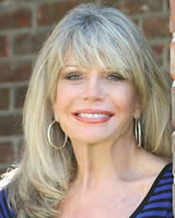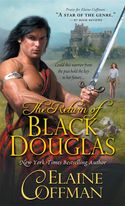
 I get asked quite a bit about what I’ve learned while writing. Where the Highlanders came from was my biggest surprise, for historically, they share little with the Lowlanders, but I never truly understood this difference until doing research on THE RETURN OF BLACK DOUGLAS.
I get asked quite a bit about what I’ve learned while writing. Where the Highlanders came from was my biggest surprise, for historically, they share little with the Lowlanders, but I never truly understood this difference until doing research on THE RETURN OF BLACK DOUGLAS.
I’ve always been a bit of a stickler when it comes to research, in that I love history, which is why I chose to write Historical Romance, and I truly love doing the research. THE RETURN OF BLACK DOUGLAS it was the earliest time period I have written about, being set in 1515. My biggest surprise was in learning where the Highlander’s came from and how they fit into the big picture that most of us have of Scotland.
The early history of the Highlands is sketchy at best, and this is due, in part to the fact that the Scottish Highlands were thought of as the backwater of Europe, and not worth much regard. The Highlands were also in a remote part of Scotland, where travel was difficult. There were no “roads” there in this time period, only trails. Because of this, historical information on the Highlanders and their clothing, customs, etc., is almost nonexistent, and therefore many wrong assumptions have been given undeserved credibility- like the wearing of the kilt.
There was considerable difference between the Highlanders and the Lowlanders, and not just geographically. Unfortunately, there are many sites with misinformation on the Internet. But, according the BBC, the Highlands were settled by the Gaels from Northern Ireland. For centuries historians have debated the Gaels origin. The earliest source dates back to the 10th century and believed the Gaels went from Northern Ireland in around 500 AD, under King Fergus Mor, and conquered Argyll from the Picts. Recent archaeologists challenge this belief because of the building styles of crannogs and forts suggest the Gaels resided in Argyll for many centuries before King Mor and they shared a common Gaelic culture with Ireland. The Picts defeated the Gaels in the early 8th century and the Gaels defeated the Picts in the mid 9th century. Are you getting dizzy yet? Later the lands of Argyll fell under Norse control.
What is confusing about the Gaels and Celts is that many think they are both races of people, but they are not. A Gale can be a Scottish Highlander or an Irish Celt. Gaelic relates to the Gaels or their culture or languages, not their race. Celts were members of the ancient Indo-European people, who in pre-Roman times lived in Central and Western Europe, and were driven to Ireland by the Romans and certain Germanic peoples, especially the Angles and Saxons. The Gaels (speakers of Gaelic) were of Celtic (the race) stock. The Highlands of Scotland (and this includes the Western Isles like Mull) have a highly distinctive culture based on the Gaelic language and the clan system. Even the word clan is Gaelic meaning “offspring,” from Old Irish cland, taken from Latin.
Speaking Gaelic, wearing the plaid, using the clan system is synonymous with the Highlands and their way of life. Lowlanders did not have a clan structure and considered Highlanders as feudal, uncivilized heathens. Even the word “Scots”, is a direct reference to the Highlanders and not the whole of Scotland. Unlike the Highlanders who were of Celtic, Gaelic speaking stock, the Lowlanders were a mix of Romans, Frisian, Angles, Saxons, Norse (Danes, Norwegians) Normans and the Flemish, just like the English (who also had the ancient Britons in the form of the Welsh. And, interestingly enough, the Welsh are of similar stock as the Highlanders, for the Welsh (Britons) were of a different branch of Celtic origin).
I realize some of this will seem boring to many of you, but one nice thing it does, is it shows you, the reader, what we, the authors go through to bring our book to you. What I have said here, is not written in this manner in my book, but knowing it does enable me to give you a glimpse of Scotland in 1515 that is based upon real research from credible sources.
THE RETURN OF BLACK DOUGLAS BY ELAINE COFFMAN – IN STORES APRIL 2011
He’ll Help a Woman in Need No Matter Where She Came From…
Alysandir Mackinnon rules his clan with a fair but iron fist. He has not time for softness or, as he sees it, weakness. But when he encounters a bewitching young beauty who may or may not be a dangerous spy, but surely is in mortal danger, he’s compelled to help…
She’s Always Wondered if She Was Born in the Wrong Time…
Thrown back in time to the tumultuous, dangerous Scottish Highlands of the sixteenth century, Isobella Douglas has a lot to learn about her ancestors, herself, and her place in the world. Especially when she encounters a Highland laird who puts modern men to shame…
Each one has secrets to keep, until they begin to strike a chord in each other’s hearts that’s never been touched before…
ABOUT THE AUTHOR
Since her first publication in 1988, New York Times Bestselling author Elaine Coffman’s books have been on the NYT, USA Today Top 50, and Ingram’s Romance bestsellers lists, and won four nominations for Best Historical Romance of the Year, Reviewers Choice, Best Western Historical, and The Maggie. Elaine lives in Austin, Texas, where she is working on her next book! For more information, please visit http://www.elainecoffman.com/.
To comment on Elaine Coffman’s blog please click here.


No Comments
Comments are closed.